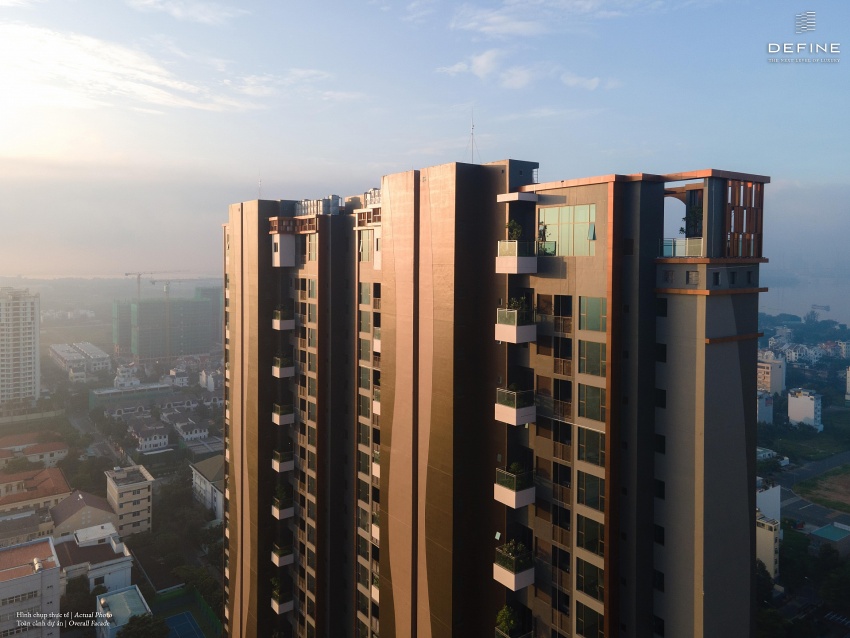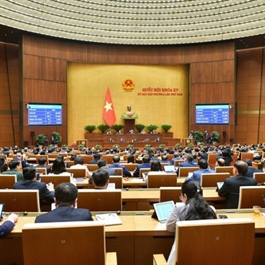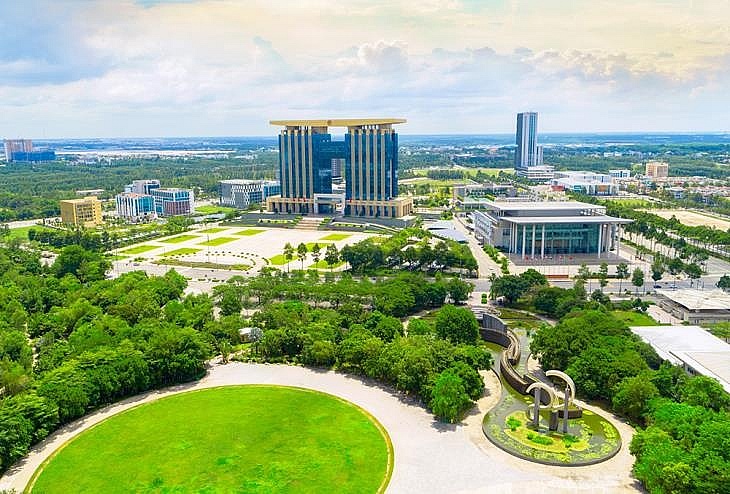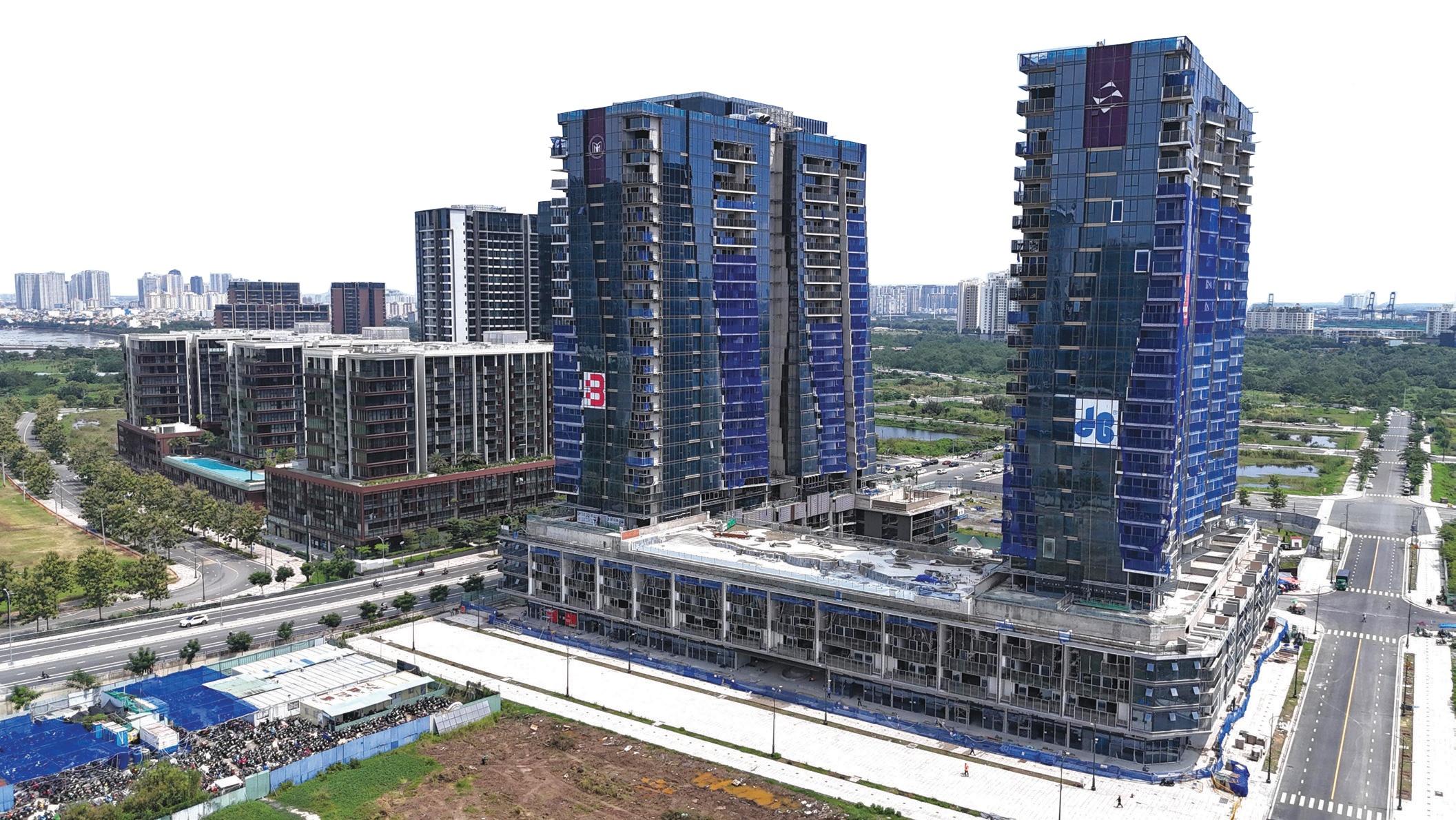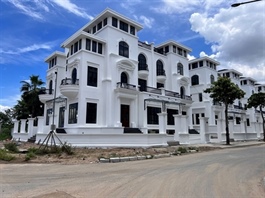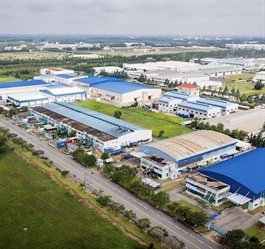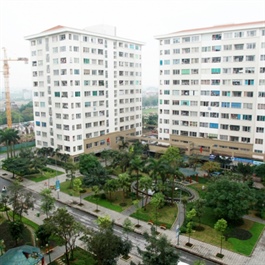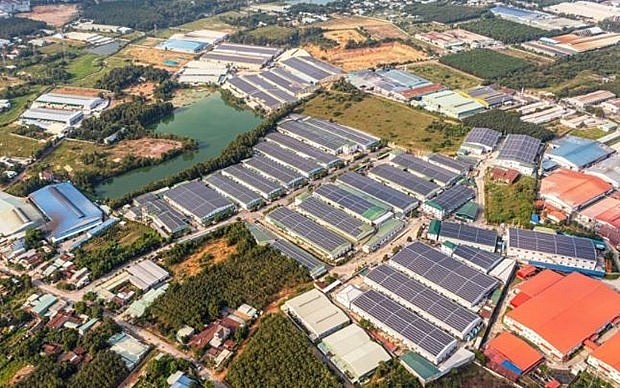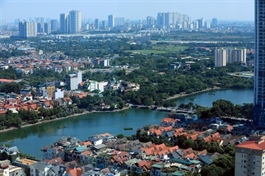Southern region faces scarcity of new supply of industrial land
Southern region faces scarcity of new supply of industrial land
New supply in the industrial real estate market in HCM City and neighbouring provinces has been slow amid an increase in demand from manufacturing industries during the peak year-end buying season before Tết (Lunar New Year).
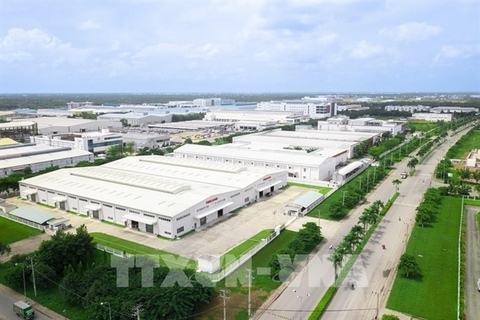
Long Hậu Industrial Park in Long An Province’s Cần Giuộc District. — VNA/VNS Photo |
According to a report by Cushman & Wakefield released this week, the industrial real estate market in the south, specifically key areas such as HCM City, Bình Dương, Đồng Nai, Long An and Bà Rịa-Vũng Tàu provinces, did not have any launches in the last quarter of 2023.
The report also said that the net absorption of industrial land in the fourth quarter of 2023 was 84ha, showing that demand for industrial land is very high.
Bà Rịa - Vũng Tàu Province accounted for 54 per cent of the total net absorption area last quarter thanks to two large investment projects in the electronics and chemical industries. Long An, Đồng Nai and Bình Dương accounted for 17 per cent, 16 per cent and 12 per cent of the total net absorption area, respectively.
High demand but limited supply has caused industrial land rental prices to increase compared to previous years.
The average primary rental price of industrial park land was recorded at US$173 per square metre per month, up 4 per cent quarter-on-quarter and up 7.8 per cent year-on-year.
Regarding ready-built factories in the South, Cushman & Wakefield said that the market welcomed a new ready-built factory (RBF) project in Đồng Nai Province. RBF rent remained stable quarter-on-quarter, at $4.7 per square metre per month, and increased 1.4 per cent year-on-year.
According to Cushman & Wakefield experts, demand for renting RBF projects this quarter comes not only from small and medium enterprises (SMEs) but also from large manufacturing companies. Due to limited industrial park land in some southern provinces, some businesses consider RBF as an alternative rental option thanks to lower investment costs.
Đồng Nai and Bình Dương, the two main RBF supply centers, respectively accounted for 39 per cent and 52 per cent of the total net absorption area this quarter with about 79,000sq.m.
Meanwhile, the ready-built warehouse (RBW) market is relatively abundant in supply. In the fourth quarter of 2023, the southern market welcomed a large new supply with an area of 280,000sq.m from two projects in Long An Province including BW Xuyên Á and LOGOS Long Hậu.
However, according to Cushman & Wakefield, demand from the manufacturing and export sectors has not yet recovered amid weak global demand and an unstable economic outlook. Therefore, rental demand in general mainly comes from domestic consumption to serve increased shopping demand before Tết.
According to VNDirect Securities, limited supply will shape two shifting trends in the near future. Firstly, investors are gradually turning their attention to tier-2 markets, that offer more competitive rates thanks to the relatively large difference between the tier-1 and tier-2 rental rates, both in the north and south.
In addition, the available land in tier-2 offers more options for tenants, especially as traffic connectivity is increasingly improved. In addition, labour costs are also lower than in tier-1, VNDirect said.
Forecasting the supply of the industrial real estate market in the Southern region in the coming time, Cushman & Wakefield commented that with the adjustment, announcement and approval of the master plan of the provinces and HCM City from now to 2030, vision to 2050, the new supply of future industrial park land will constantly increase and is forecasted to add about 6,100 hectares in the period 2024 - 2026, thereby solving the situation of limited land fund in the Southern region.
Việt Nam's industrial parks are currently more appealing than those of rival countries in the area, largely because the local currency has depreciated less over the past year compared to those of Malaysia, Indonesia, and India.
Rent for industrial land in Việt Nam is currently 25-40 per cent lower than other countries in the region. In addition, the country possesses a strategic geographical position, and is close to key Asian supply chains.
Việt Nam is still expected to benefit the most from the trend of moving manufacturing from China, especially by large manufacturers. LG Group plans to invest $4 billion in Việt Nam, while Samsung will raise investment capital to $20 billion.
However, FDI inflows show signs of decline due to concerns about economic recession and the continuous rate hikes from the US Federal Reserve, causing rent for industrial land in Việt Nam to advance slightly this year.



